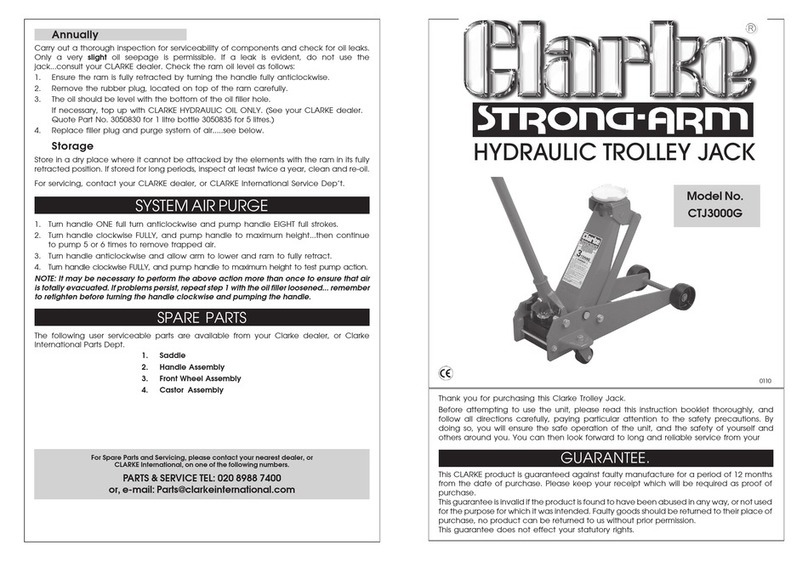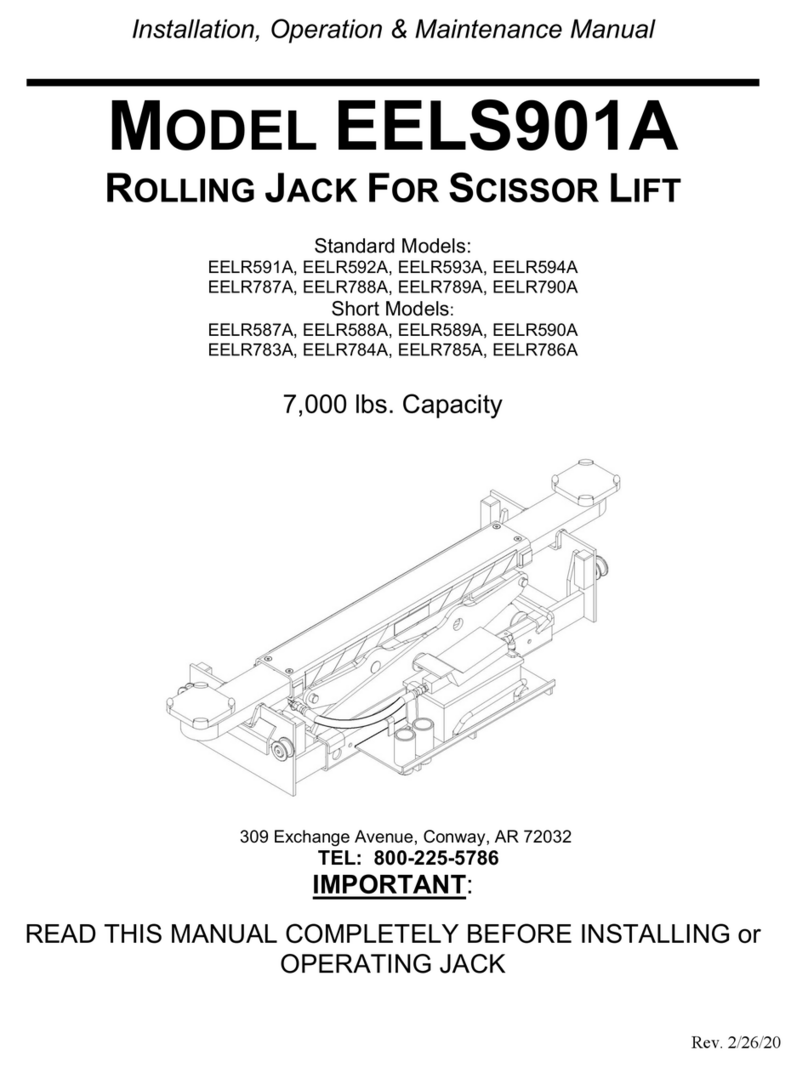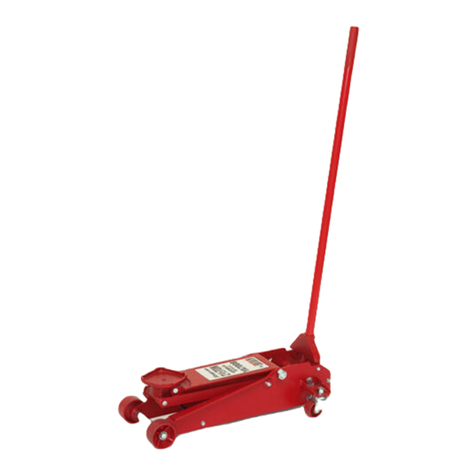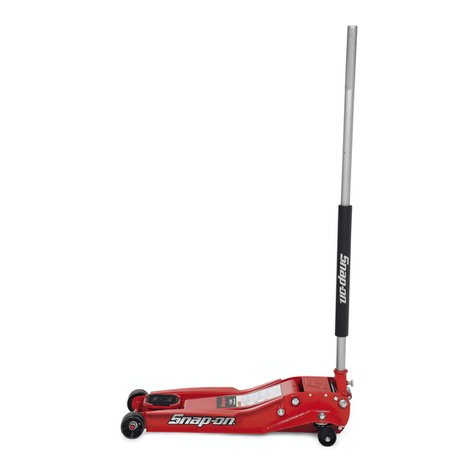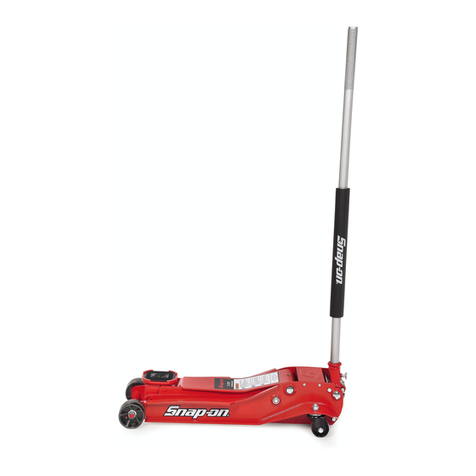
FJ400 5 Rev. 07/23/18
FEATURES
The Snap-on®FJ400 4 Ton Capacity Service
Jack was designed specically for the profession-
al technician. The Model FJ400 is assembled in
the USA and includes Patents and Patent Pend-
ing features that provide exceptional performance
and reliability.
CHASSIS
The exclusive Snap-on®jack chassis is made
of steel plate with re-enforcing upper and lower
anges for added strength. Low lift height and
extended low prole frame provide access under
low ground clearance vehicles. High lift height for
positioning vehicles on frame straightening racks
or alignment systems. Large patented saddle
for load positioning, locks into saddle base and
is easily removed for installation of other saddle
adapters.
HYDRAULIC POWER UNIT
The two pump piston power unit raises the jack’s
saddle to the load quickly to save work time. Once
a load is applied to the saddle, the jack will func-
tion normally and not lift the load with the fast
rise feature. Spring loaded pump pistons are in
constant contact with the handle yoke to prevent
handle from falling. An integrated ltration system
prohibits contaminants from entering hydraulic
valves and high pressure components. Self-con-
tained non-vented reservoir prevents uid leaks.
High performance seals and hydraulic uid pro-
vide longer life. Load-limiting and bypass valves
prevent use beyond working capacity and prevent
over-extension of the ram.
MANEUVERABILITY
Wide track front wheels with crowned rolling
surface and grease ttings provide smooth
rotation. Wheels secured to axles by way of
locknuts. Two rear swivel caster assemblies are
constructed with dual bearings and lubricated
axles for minimal axial and radial play.
SMOOTH OPERATION
Fully factory lubed with grease ttings in the lift
arm and two ttings in the handle yoke to access
pivot pins. Handle yoke includes quick-lock spring
knob for easy handle insertion or removal. Heavy
duty release valve assembly with built-in stop pre-
vents accidental removal and provides easy rota-
tion. Long one-piece handle for easier pumping
and positioning of jack under vehicle.
ADDITIONAL INFORMATION:
• Low height of 4.2" to t easily under a
variety of vehicles.
• Lift arm is contoured to allow clearance
with vehicle’s rocker panel.
• Maximum lifting height of 24.5".
• Dual pump pistons for speed to reach
service height quickly.
• Premium U-cup seals on pumps and ram
pistons for long life.
• Removable saddle with rubber pad.
• Professional, one-piece handle design.
• Grease ttings in lift arm pivot, handle yoke
pivot and front wheels.
• Front wheels have a nut and shoulder
design for positive retention.
•
Special Snap-on
®
high-performance
hydraulic
oil for extreme temperatures and
reduced wear.
• Internal ltration with magnet in pump
reservoir to maintain oil cleanliness.
• Powder coated nish for durability.


